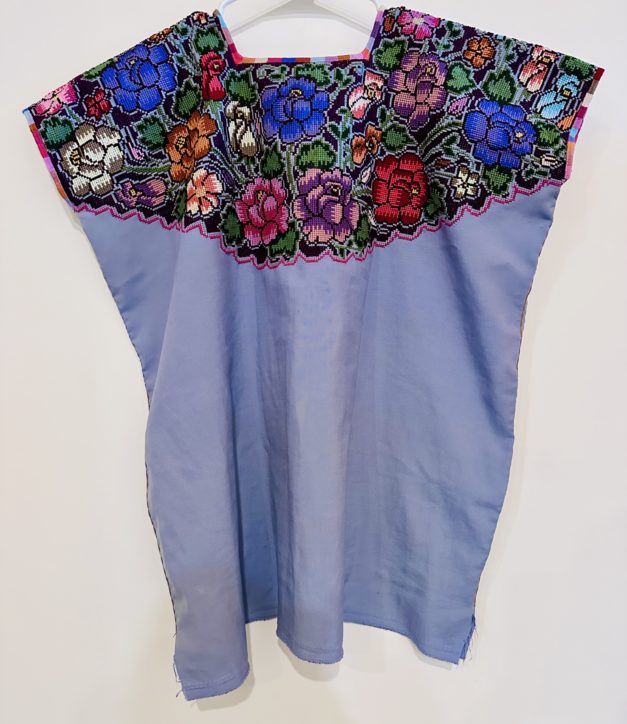It feels like springtime here in Oaxaca, although we are still celebrating Christmas. Yesterday was downright warm, with temperatures rising to the low 80’s, though nights can be a chilly 45 or 50 degrees. Christmas here is an elaborate and lengthy celebration, starting on December 12 to celebrate the Virgin of Guadalupe and officially ending with Dia de la Candelaria on February 2. The Three Magi, or Wise Men, arrive on January 6, for Day of the Three Kings or Dia de los Tres Reyes.

Celebrated and tasty Rosca de Reyes
You have probably figured out that food motivates me almost as much as textiles. So, this morning I was off again to the wondrous, expansive Sunday tianguis — portable street market — in Tlacolula de Matamoros, ten minutes from where I live. I wanted to see what was in store for food preparations.


Front and center is Rosca de Reyes, a round or oval fruit-studded sweet bread, a traditional delight. Most Oaxaca celebrations are home and family centric, with a children’s gift exchange and a spin the top gambling game with whole nuts. When you go visiting, it is customary to bring a small gift for children and one of these bread loaves.
Tucked inside the loaves are one or several little plastic dolls that symbolize the baby Jesus. Whomever gets one of these dolls embedded in their slice of Rosca is obliged to host a tamale party on Candlemas. Corn and tamales, symbols of sustenance, are interwoven into this and other Mexican celebrations.


Today in the Tlacolula market the bread section was piled high with pan de yema, a sweet egg bread, shaped in the round. The vendors were doing a brisk business. This year, bakers added decoration of sliced, canned peaches to accompany the candied dates, prunes, pineapple bits and cherries.


Live poultry, like guajolotes and chickens, are a big item, too. Add to that roses ($1 USD a dozen), huge papaya (10 cents each), mangoes, melon, strawberries, watermelon, avocado (5 cents each USD), and any number of types of other fresh fruits and vegetables at everyday bargain prices. For those who forget to bring their shopping baskets or buy more than they planned, there are specialty vendors who sell these, too.

 I like to arrive at the market by 10 a.m. to take a leisurely stroll through the streets. Before noon, there are not a lot of people and there is no line at the bank ATM located on church side street. Later, it’s packed and it’s like bumper cars with people.
I like to arrive at the market by 10 a.m. to take a leisurely stroll through the streets. Before noon, there are not a lot of people and there is no line at the bank ATM located on church side street. Later, it’s packed and it’s like bumper cars with people.

Chicken meatballs in spicy broth at Comedor Mary
Lunch is a special treat at Comedor Mary, located on the opposite side of the church on the street that borders the permanent market. Today’s special was albondigas con pollo — a picante broth with fresh ground and spiced chicken meatballs. Amazingly delicious.




This is the season to come to Oaxaca and stay a while. It is a feast for all your senses. And it is senseless to stay wrapped up in frigid northern weather if you don’t have to! Feliz Año Nuevo.

Like this:
Like Loading...







































Oaxaca Clinic Receives Medical Equipment Gift
This week Federico Chavez Sosa and I made a visit to the Teotitlan del Valle, Oaxaca Centro de Salud (public health clinic) to present a gift of five stethoscopes to the clinic doctors. The gift is from Dr. Deborah Morris, MD, PA-C, academic coordinator and the Methodist University Physicians Assistant Program in Fayetteville, NC.
The Centro de Salud hosted two Methodist University physician assistant students, Ben and Megan, in summer 2013 for a one-month externship residency. They reported that the doctors would benefit from better quality equipment and suggested that the stethoscopes would make an excellent contribution to improved quality of care.
Of course, they asked the doctors first if they thought they would like to have new stethoscopes after the doctors admired the ones the students brought to use during their externship.
Federico made the presentation to clinic director, Doctora Elizabet, on behalf of the village as he ended his three-year community service commitment as one of three volunteer committee members to lead public health services, including water quality, sanitation, and community health. This service, called a cargo, is a mutual support practice of Usos y Costumbres indigenous Mexican pueblos.
We welcome university level nursing and physician assistant students to ask about participating in a summer residency. Basic Spanish language is necessary. Openings are available for summer 2014 and scheduling is flexible. The cost includes lodging, two daily meals, facilitation, and a contribution to the clinic. Please contact Norma Hawthorne if you are interested.
Like this:
2 Comments
Posted in Cultural Commentary, Health Care, Teotitlan del Valle
Tagged clinic usos y costumbres, Mexico, nursing, Oaxaca, physician assistant, public health, Teotitlan del Valle, volunteer service